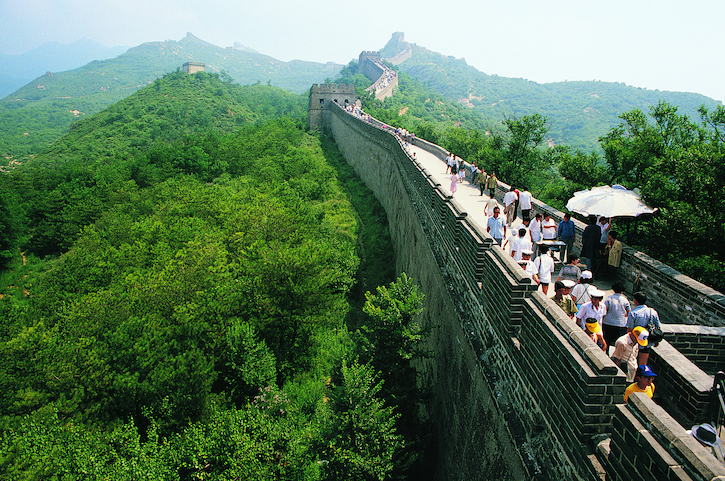
China is creating its first system of national parks—to guarantee the protection of the country’s rich natural heritage, while allowing its people to experience the beauty of nature. This month, the Paulson Institute is hosting Chinese experts in the United States for intensive training with U.S. national parks and conservation professionals. We are working on guidelines for the nine pilot parks designated by the Chinese government, including Great Wall National Park pilot.
Located some 80 kilometers northwest of Beijing, Badaling is the most visited section of the Great Wall of China—which means it needs careful stewardship to protect the wall and its natural surroundings from the damage that tourism can cause if not managed properly. The pilot area covers 60 square kilometers, including the Badaling Great Wall and the Badaling Forest Park. The portion of the Great Wall on this site was built in 1504 during the Ming Dynasty for military and strategic purposes. In 1957, it was open to tourists. It is the only one of China’s nine pilot parks that combines the cultural and natural landscape.
With 8 million visitors last year, Badaling, like other important monuments around the world, is at risk of being “loved to death.” Badaling Great Wall is crowded all year-round, with tourists littering and sometimes carving graffiti and touts aggressively hawking their goods. China now plans to build the “deepest, largest high-speed rail station at Great Wall”, further shortening the commute between downtown Beijing and Badaling and no doubt attracting even more tourists to the site.
Natural erosion due to perennial exposure to wind and rain are also continuing threats. The adverse natural conditions on the mountaintop make the Great Wall vulnerable to extreme weather, such as sandstorm and rainstorm. Surrounding environmental degradation may accelerate the decay by removing vegetation and allowing more wind and sand to approach the wall. Vegetation in the area plays an important role in conserving water resources, controlling soil desertification, and balancing carbon emissions for the city of Beijing.
The Great Wall National Park pilot aims to protect the integrity of this important cultural heritage site and the health of the surrounding natural environment. The pilot may also raise public awareness of Great Wall protection and promote sustainable tourism practices.


